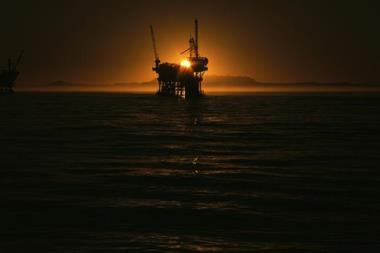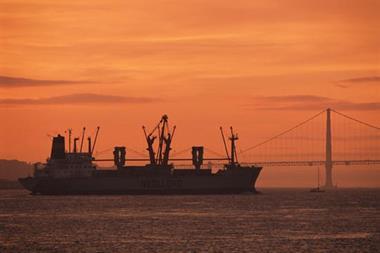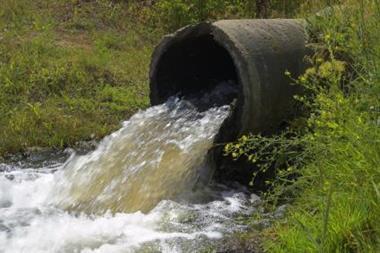The development of deep water fields, often in remote locations lacking infrastructure, poses new challenges to the offshore energy industry, which must operate facilities safely over 20 to 30 years in harsh environmental conditions. By Phil Thomas and David Brown
It is often said that the easy oil is gone. To exploit safely the oil and gas reserves in harsher environments and deeper waters, advances have been made in the technology and operating procedures. The equipment deployed offshore today is a far cry from that employed just 20 or 30 years ago. For example, over the past decade the number of floating production systems has increased by by 250%. Sixty new production floaters are on order for delivery, with the number expected to double over the next five years, according to consultants International Maritime Associates.
As with any process or system, as the complexity increases, so does the associated risk. The risk of a hazard or failure may be defined as the product of the occurrence frequency and the severity of that hazard. Risks associated with offshore operations include:
• Environmental risk – major oil spills, gas release, etc
• Financial risk - loss of assets, delay in production start-up, halt in production, etc
• Human risk - industry fatalities and injuries, societal risk, etc
• Combination of the above
A catastrophic offshore loss typically involves all three. The safety regime for offshore operations in the North Sea was revised as a result of the findings of the Cullen Enquiry following the Piper Alpha disaster in 1988, which claimed the lives of 167 offshore personnel. However, there have been other offshore disasters, and lessons learned can be forgotten over time.
One issue that confronts the industry is that of confidentiality and the reluctance of operators to release the findings of failure or accident investigations. Some regions of the world lack a strict safety regime such as that found in the North Sea. Accidents often go unreported, and experience that might help prevent similar incidents is lost.
High risk issues for offshore operations
An offshore production facility comprises several interconnected systems that must function in harmony on a virtually continuous basis to allow efficient production. The following comments concentrate on floating production systems. However, much is also applicable to fixed platforms and other oilfield vessels, such as mobile offshore drilling units (MODUs). Principal systems are:
• Platform
• Containment of product
• Processing of product
• Subsea equipment
• Mooring and station-keeping systems
Factors that may initiate failures:
• Poor design or component selection
• Poor manufacture
• Inadequate transportation or installation procedures
• Inadequate operational procedures
• Unexpected service
• Human factors
It is the responsibility of all parties involved in offshore operations to minimise risk using principles such as ‘as low as reasonably practicable’ (ALARP). Some of the issues they must address for the successful design, installation and operation of an offshore facility include the following:
Loss of containment – This is the uncontrolled release of hydrocarbons from any component of the offshore facility. Causes include the structural failure of storage units due to extreme loading or collision, rupture of risers and failure of process equipment leading to major leaks. The consequences can be severe: deaths and serious injuries, damage to assets from the ignition of highly flammable substances and environmental pollution from oil spills. The Piper Alpha explosion was the result of a leak of gas condensate ultimately resulting from poor maintenance procedures.
Fatigue issues – Repeated loading and unloading of offshore structures or components can eventually lead to fatigue failure. Loading can come from the environment (wind, current, waves, vortex shedding, etc), machinery vibration or operational load cycles. The operator must have assessments made of the expected fatigue life of a component. Knowing this, allows the operator to withdraw it from service at a suitable point.
Automation – Increasingly, offshore systems are being automated. Automation can greatly reduce risk, provided that these systems operate as intended and do not suffer major failures themselves. This is especially important for safety/emergency shut down systems. Programmable logic controllers (PLCs) are now common offshore. The PLC supplier must thoroughly test these systems and operating software and provide sufficient redundancy to ensure continual operation as required.
Reservoir fluid properties and flow assurance – The properties of the reservoir fluids can have a significant effect on the operation of an offshore facility. Corrosive well fluids can degrade structural integrity leading to loss of containment. High pressure and high temperature fluids can cause failures in equipment that are not fit for purpose, again leading to a loss of containment.
Flow assurance is also a major issue for subsea flowlines. Formation of hydrates or wax within the flowline can reduce or prevent effective production. This can be a particular problem in deep water fields.
Transport and installation – Loss or damage to offshore facilities incurred during transport and installation can result in immediate, high replacement costs or in-service failure if the damage goes unnoticed.
Harsher environment
Operations to recover oil and gas from offshore fields are taking place worldwide in regions as diverse as the Gulf of Mexico, Brazil, Canada, Northern Europe and the Atlantic Frontier, West of Africa, South East Asia, China and Australia/New Zealand.
Each region presents its own set of problems in terms of the environment with different wind, waves, currents, temperatures and water depths. The production facility must be designed to withstand the loading imposed on it by the environment. The design of a platform for one region may not be suitable for another region. It is vital that the operator has the facility assessed for the conditions it will face in actual service. Operational procedures must also account for the environment. For example, a platform operating in the Gulf of Mexico must be designed to withstand the force of a hurricane (winds over 245kph for a Category 5 storm). Platforms operating in the northern reaches of the North Sea or the Atlantic Frontier experience harsh environmental conditions for long periods during their service lives and must be designed accordingly to continue production in harsh weather conditions.
Failure to account fully for the specific environment in which a platform is to operate may result in a loss of structural integrity or platform stability and ultimately the loss of life, asset and containment.
Remote working, distance to sea bed – In recent years, exploration and production have progressed into greater water depths. In the Gulf of Mexico for example, facilities are currently producing from water depths in excess of 2,500m. Water pressure increases by one atmosphere for every 10m of water depth. Systems such as subsea wellheads, manifolds, risers and umbilicals must be designed to withstand the extremely high pressures at these water depths.
The financial risk associated with deepwater developments should not be under-estimated. Subsea hardware costs generally increase significantly with increasing water depth, as do the installation costs and timescales involved.
If production is shut in by the failure of a subsea component, the expense and time involved in rectifying the situation will escalate: vessels capable of performing retrieval and re-installation operations in very deep water may not be available immediately and spare components may not be readily available. The reliability and redundancy of subsea hardware is, therefore, very important.
Mooring system failure – Floating production systems often use a spread of mooring lines anchored to the seabed to maintain position. Failure of one mooring line can lead to increased tensions in the remaining lines and cause their failure. A catastrophic failure of the mooring system can result in the floater drifting off location and rupture of the risers with loss of containment and lead to the risk of collision with other offshore infrastructure or commercial shipping.
Additionally, although mooring lines are usually designed to break near the sea surface, on a number of occasions breakage at the anchor has lead to adrift rigs dragging moorings for many miles across nearby subsea wells and equipment. The consequences of failures of other systems of station-keeping employed by production platforms, such as dynamic positioning systems or single anchor leg mooring (SALM) systems, a single mooring column rising from the seabed with an articulated yoke. are essentially the same as that of a spread mooring system.
Risers and umbilicals – Risers and umbilicals provide the connections between the production platform and the seabed equipment. The risers are the conduits for the hydrocarbons produced from the reservoir, and the umbilicals provide electrical and hydraulic control for the subsea systems. These are high cost items and, more importantly, critical conduits for maintaining production, often with minimal or no redundancy. Their failure in-service can halt production and in the case of risers lead to a loss of containment. It is vital that the riser/umbilical design is fit for purpose in the intended service environment and that procurement, manufacture and installation procedures are tightly controlled. Redundancy of these systems is a key part of the field design.
Offloading operations – The concept of a floating production system (FPSO) involves the storage of large volumes of hydrocarbons on the vessel to be offloaded regularly to a shuttle tanker, typically once or twice a week. Risks associated with such operations include the collision of the two vessels and loss of containment through failure of the export line. Additional risks include the failure of offloading systems, inability to connect due to weather or unavailability of shuttle tankers which effectively halt production from the FPSO.
Reduction of risk
The risk associated with a hazard can be reduced by lowering the probability of occurrence and minimising the consequences. In terms of offshore operations, ways in which to achieve this include:
• Quantified risk analysis A clear understanding of the installation and operational service conditions, including the environment, in which the facility or system is intended to operate
• Comprehensive modelling and testing at the design phase
• Policing of sub-contractors
• Detailed quality assurance/quality control (QA/QC) during procurement, manufacture and transport
• Sound operational guidelines and regulations
The operator should have a rigorous quantified risk analysis applied to the technology and procedures used in offshore operations during the design phase with third party verification. A structured approach may then be used to mitigate the risks identified, reducing their occurrence frequency and potential severity.
It is extremely important to identify and eliminate the large, very costly ‘single failure event’ induced loss scenarios. Failure mode, effect and criticality analysis (FMECA) and fault tree analysis techniques are effective tools for such investigations. Small failures may lead to more significant failures if they go undetected. The redundancy built into a design should be assessed for common cause failures – those failures that can affect all redundant systems.
During the design phase of an offshore facility it is important to gain an appreciation of its response to extreme conditions. The designer should have model tests of a scaled prototype performed using state of the art facilities where operational and survival environmental conditions (wind, wave, current over a range of expected magnitudes and directions) may be applied. Such testing allows for a greater understanding of the complex interactions that occur in the offshore environment and may be used to validate computational analysis.
Finite element analysis is a computational tool that can be used to test designs both under extreme load cases and for fatigue. It can identify where and when structural failure will occur. Potential problems can be highlighted and removed at the design stage. Additionally, knowing when a failure is likely to occur due to fatigue, it is possible to remove a system or component from service prior to failure. Lowering the probability of failure, therefore, reduces the in-service risk.
Materials testing allows for the validation of computational analysis, such as finite element analysis. Prototypes of components to be employed offshore can be tested to destruction, knowing the loads that are applied to them. It is better to learn from ‘disasters’ that occur in a controlled environment rather than in service.
Offshore operations involve many complex procedures. Examples include the tow out and mooring on site of a new production platform hull and installation of major offshore lifts by crane vessels. Simulation techniques are an essential tool in the formulation and assessment of such operations.
Computer based ritical activity simulation provides invaluable insight into how an operation will proceed under a wide range of environmental conditions. It also allows consideration of the effects of unplanned events, such as tug boat failure during tow out and installation, the failure of construction vessel dynamic positioning systems or deterioration of weather. Operational planning can then include contingencies for system failure during the operation itself.
Monte Carlo simulation is another extremely powerful analysis tool. To date this has not been exploited to the full in engineering applications. This method is used to model processes that depend on a large number of individual events that occur randomly but that influence each other. One of the key advantages of this technique is that it provides a probability that a specific result will be occur. It, therefore, provides an indication of the probability of undesirable outcomes. This method can also be utilised to model numerous diverse offshore operations, such as the risks associated with the transport of oil from an FPSO via shuttle tanker or the likely path of a drifting rig following mooring failure in hurricane conditions. Both technical and financial risks can be addressed within the Monte Carlo methodology.
Many accidents or failures offshore can be traced back to manufacturing defects of vital systems. An effective QA/QC policy is essential for the procurement, manufacture and transportation of such systems. Due to the complex manufacturing process, the flexible flowlines and risers used to transfer the oil and gas from the wellhead on the seabed to the production platform are particularly vulnerable to defects without sufficient controls. If such faults are not identified, they can result in a catastrophic failure with loss of containment and associated major losses. Additionally, replacement costs and timescales are large, as are the financial penalties of losing production from one or more wells.
Exposure to additional risks
One of the underlying causes of many claims in the current market is the simplistic extension of existing technology for use in challenging environments that push it past the limits of its capability. It is far better to re-think the problem from the ground up. There should be a detailed assessment related to the conditions in which the facility will be used, rather than relying on those performed for less hazardous situations.
New technology is coming into the industry at an accelerating rate. This can help improve safety and reliability and provide great economic benefits, but must be balanced against potential increased risk. This includes the ‘never been done before’ factor and the potential of unanticipated problems. The human factor must also be considered, including re-training of personnel and the learning time involved. It is important for operators to analyse, test and develop the use of new technology incrementally.
Risk management strategies
In general terms, effective risk management is the calculated use of all available information, the ability to assess its importance within the operational framework and capability to adjust the framework where necessary. Examples of risk control strategies that can reduce the incidence of loss:
• Significantly more focus on critical components, such as the water column architecture components, that is risers and umbilicals (In particular, this requires fit-for-purpose design with a good understanding of the range of service conditions, and effective QA/QC procedures for the procurement, manufacture and transport of such systems.)
• Quantified risk analysis
• Shared information within the industry to avoid similar loss scenarios
• More use of available risk identification tools and greater emphasis on the findings of the evaluation Within the industry, the use of quantified risk analysis and other tools, such as critical activity analysis and Monte Carlo simulation, can be used to identify and quantify exposure and assist in the evaluation of the threat. This information is essential to the decision making process to retain risk or use the insurance market to spread the exposure. By providing underwriters with a full analysis of the risk and a willingness to work as a partnership to minimise the incidence of loss and identify the catastrophe exposure, the risk manager can help control premiums and maintain insurance capacity.
Postscript
Phil Thomas is an offshore and subsea engineer with BPP-TECH, p.thomas@bpp-tech.com. David Brown is a naval architect and director of BPP-TECH, d.brown@bpp-tech.com. www.bpp-tech.com




















No comments yet